SPEEDING AND STREET RACING
WE GET IT
WE'RE IN IT TO WIN IT
Book your consultation
- This form submission is encrypted and secured to ensure your information remains confidential.
This form submission is encrypted and secured to ensure your information remains confidential.
We know the law and your rights. Get the best traffic lawyers on your side
Award Winning Law Firm
We have won several awards including APAC’s coveted Best Traffic Law Firm Australia 2025.
Proven Track Record
40+ Years of Combined Experience in Defending traffic matters means a successful outcome is on the table.
5 Star Reviews Everywhere
We’re in it to win it and we fight hard for our clients. That’s why anywhere you look you will find only 5 star reviews.
Book a Consultation Today
If your case is important to you it’s important to us. Call Jameson Law and join the winning side today.
Award-Winning
Law Firm
We have won several awards including APAC’s coveted Best Traffic Law Firm Australia 2025.
Proven Track
Record
60+ Years of Combined Experience in Defending traffic matters means a successful outcome is on the table.
5 Star Reviews
Everywhere
We’re in it to win it and we fight hard for our clients. That’s why anywhere you look you will find only 5 star reviews.
Book a
Consultation Today
If your case is important to you it’s important to us. Call Jameson Law and join the winning side today.
We’re all guilty of speeding at some point in our driving career. Some people just haven’t been caught.
Speeding offences are a serious traffic offence and are categorised as dangerous driving. They are treated seriously by the court because they can have tragic consequences. If you have received a fine for speeding, contact our experienced traffic lawyers for a free initial consultation.
In New South Wales, traffic offences such as speeding are covered by the Road Rules 2014 (NSW) and the Road Transport Act 2013 (NSW). These offences are often prosecuted in the Local Court. However, some speed related traffic offences are also covered under the Crimes Act 1900 (NSW) if they result in death or serious injury and it is up the the discretion of the prosecution whether they are prosecuted summarily or on indictment in the District Court or Supreme Court. Most speeding offences are strict liability offences meaning the prosecution only needs to prove that you committed the offence, not that you intended to commit the offence.
There are three ways you can be caught speeding:
![]() Fixed speed camera or combined red light and speed camera
Fixed speed camera or combined red light and speed camera
![]() Mobile speed camera (note: they are no longer required to be marked or display road signs)
Mobile speed camera (note: they are no longer required to be marked or display road signs)
![]() Police lidar detector (radar)
Police lidar detector (radar)
There are additional traffic offences that fall within the category of speeding offences. These include:
![]() Races, attempts on speed records and other speed trials
Races, attempts on speed records and other speed trials
![]() Conduct associated with road and drag racing and other activities
Conduct associated with road and drag racing and other activities
![]() Police pursuits
Police pursuits
![]() Drive furiously, recklessly or at speed in a manner dangerous to the public
Drive furiously, recklessly or at speed in a manner dangerous to the public
If you are caught speeding, your offence will dealt with via a fine, loss of demerit points, licence suspension, licence disqualification, impounding of vehicle and/or confiscation of number plates.
Fines are calculated using penalty units set out in the legislation. In NSW, each penalty unit is equal to $110. For example, 50 penalty units equal a fine of $5,500
Speak to a lawyer today
Speeding offences include more than exceeding the sign posted speed limit. They also include street races, unauthorised trial of the speed of a vehicle, drag racing, etc. For legal advice specific to your circumstances, contact our expert traffic lawyers..
Speeding offences
General speeding offences
The following are the most common speeding offences. The following fines are the maximum fine imposed by the court, not the fine you will be issued by the Police or Transport for NSW. However, if your matter goes before the court, the fine and disqualification period can be increased. The following general speeding offences DO NOT include speeding in a school zone or speeding by a learner or provisional driver: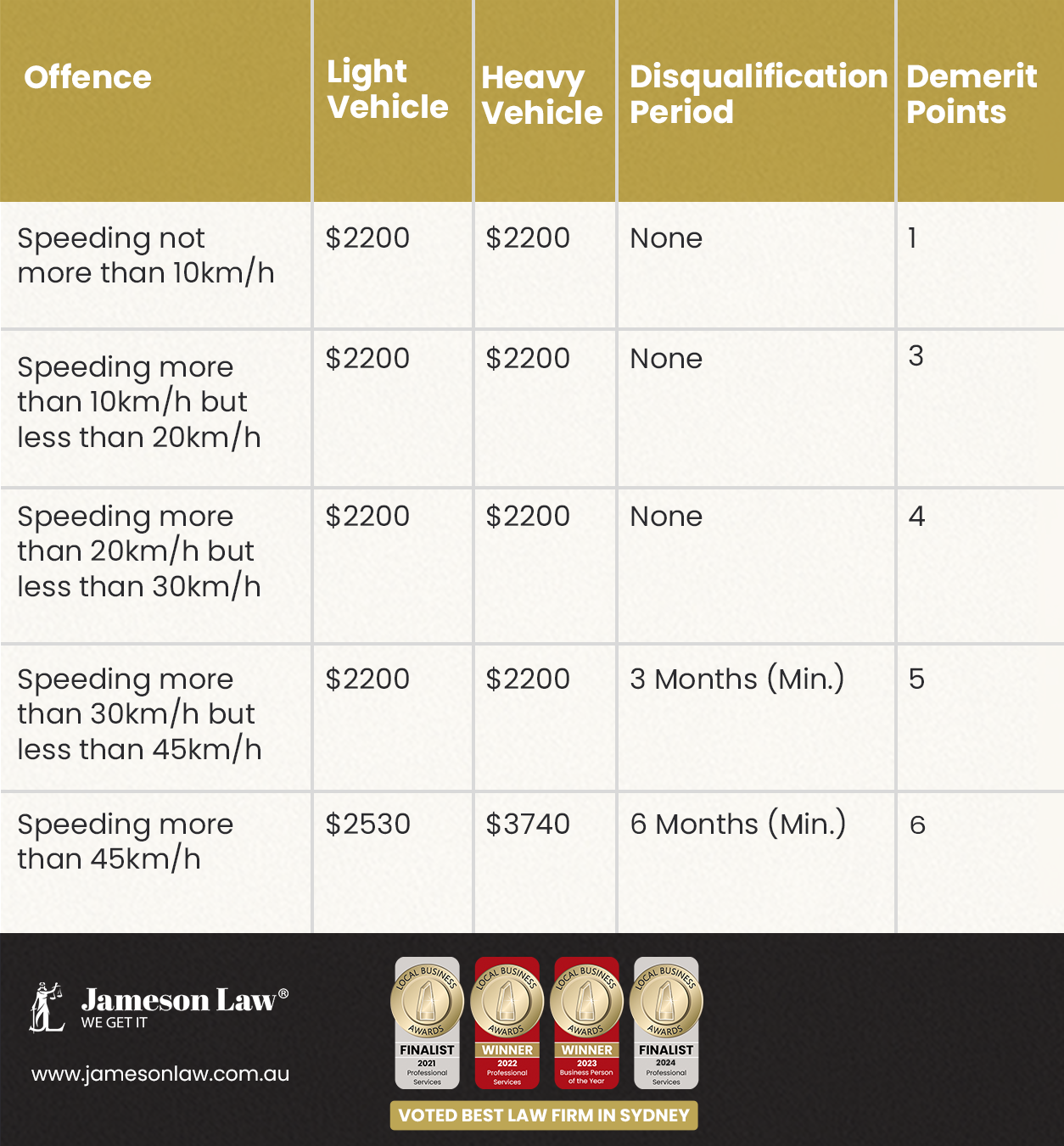
In a nutshell...
Penalties for failure to comply with the sign posted speed limit range in expense and disqualification period depending on the class of vehicle, class of licence and speed. For advice tailored to your specific circumstances, contact our expert traffic lawyers for a free initial consultation.
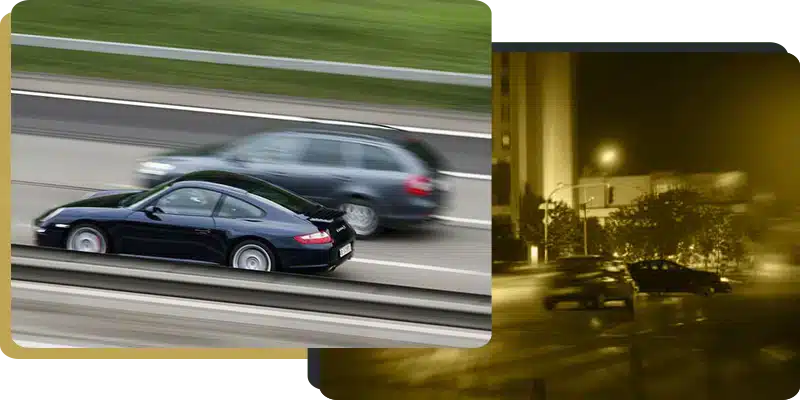
Street Racing
Street racing offences or hooning offences are serious traffic offences. They pose a significant risk to the safety of other road users and are considered anti-social behaviour because they impact on the amenity and peaceful enjoyment of the area they take place in.
Races, attempts on speed records and other speed trials
You must not organise, promote or take part in:
![]() Any race between vehicles on a road, or
Any race between vehicles on a road, or
![]() Any attempt to break any vehicle speed record, or
Any attempt to break any vehicle speed record, or
![]() Any competitive trial designed to test the skill of any vehicle driver or the reliability or mechanical condition of any vehicle on a road,
Any competitive trial designed to test the skill of any vehicle driver or the reliability or mechanical condition of any vehicle on a road,
Unless the written approval of the Commissioner of Police to the holding or making of the race, attempt or trial has been obtained.
The maximum penalty for this offence is a fine of $3,300 (for a first offence) or a fine of $3,300, 9 months imprisonment or both (for a second or subsequent offence).
If you apply to the Police Commissioner for approval and you fail to comply with the conditions set by the Police Commissioner, you are guilty of an offence.
The maximum penalty for this offence is a fine of $2,200 and an automatic licence disqualification period of 12 months. However, if the court believes it is appropriate, it can impose a shorter or longer term of disqualification.
Case Study
Paul and David have designed and built a new speed detection device with built in GPS as part of their engineering studies. They wanted to test it under real road conditions but were unable to find a local road that was suitable for the test and that would be approved by the NSW Police Commissioner. After doing some research, they found Cudal Crashtesting Lab. The Cudal Crashtesting Lab is a new facility that allows technicians to test and refine new and emerging technology in a safe environment.
In a nutshell...
Street racing, attempts to break speed records, or other speed trials are an offence, unless you have the written approval of the Commissioner of Police. Penalties range from a fine of $3,300 to 9 months imprisonment or both.
Conduct associated with road and drag racing and other activities
You must not operate a motor vehicle on a road in such a manner as to cause the vehicle to undergo a sustained loss of traction by one or more of the driving wheels (or in the case of a motor cycle, the driving wheel) of the vehicle. This is also known as a burn out.
The maximum penalty for this offence is a fine of $1,100.
You must not:
![]() Operate a motor vehicle contrary to the above (causing a burn out) knowing that any petrol, oil, diesel fuel or other inflammable liquid has been placed on the surface of the road beneath one or more of the tyres, or
Operate a motor vehicle contrary to the above (causing a burn out) knowing that any petrol, oil, diesel fuel or other inflammable liquid has been placed on the surface of the road beneath one or more of the tyres, or
![]() Do, or omit to do, any other thing that prolongs, sustains, intensifies or increases loss of traction as set out above, or
Do, or omit to do, any other thing that prolongs, sustains, intensifies or increases loss of traction as set out above, or
![]() Repeatedly operate a motor vehicle contrary to the above, or
Repeatedly operate a motor vehicle contrary to the above, or
![]() Operate a motor vehicle contrary to the above, at a time, or on a road or in a place, knowing there is a an appreciable risk that operation of the vehicle in that manner at that time and place is likely to interfere with the amenity of the locality or the peaceful enjoyment of any person in the locality or make the place unsafe for any person in the locality. The court will consider:
Operate a motor vehicle contrary to the above, at a time, or on a road or in a place, knowing there is a an appreciable risk that operation of the vehicle in that manner at that time and place is likely to interfere with the amenity of the locality or the peaceful enjoyment of any person in the locality or make the place unsafe for any person in the locality. The court will consider:
![]() The nature and use of the road on which the offence is alleged to have been committed,
The nature and use of the road on which the offence is alleged to have been committed,
![]() The nature and use of any premises in the locality of the road in which the offence is alleged to have been committed.
The nature and use of any premises in the locality of the road in which the offence is alleged to have been committed.
The automatic licence disqualification for this offence is 12 months, however, the court has the discretion to increase or decrease the disqualification period.
You must not:
![]() Willingly participate in any group activity involving the operation of one or more vehicles contrary to the above, or
Willingly participate in any group activity involving the operation of one or more vehicles contrary to the above, or
![]() Organise, promote or urge any person to participate in, or view, any group activity involving the operation of one or more motor vehicles contrary to the above, or
Organise, promote or urge any person to participate in, or view, any group activity involving the operation of one or more motor vehicles contrary to the above, or
![]() Photograph or film a motor vehicle being operated contrary to the above for the purpose of organising or promoting the participation of any persons in any such group activity.
Photograph or film a motor vehicle being operated contrary to the above for the purpose of organising or promoting the participation of any persons in any such group activity.
The maximum penalty for this offence is a fine of $3,300 (for a first offence) or a fine of $3,300, 9 months imprisonment, or both (for a second or subsequent offence).
It is a defence if you can prove that your operation of the vehicle, while against the law, was not deliberate.
You must not, on a road, engage in conduct prescribed by statutory rules, being conduct associated with the operation of a motor vehicle for speed competitions or other activities specific or described in the statutory rules.
The maximum penalty for this offence is $550.
Case Study
Sam and his friends like to meet regularly and show off the modifications they have made to their cars. These meetings take place in different locations around Sydney, using local roads, and are not part of an official car club. During the meetings, participants show off the modifications by taking part in street races that also result in deliberate loss of traction. The age and licence class of each participant varies from provisional to heavy vehicle. Social media is also popular amongst participants, with many of the races recorded and used to promote the meetings. The penalties for these offences range from a fine of $550 to $3,300 as well as a licence disqualification period of at least 12 months and possible imprisonment.
In a nutshell...
It is an offence to deliberately cause your vehicle to lose traction (burnout). It is also an offence to organise, promote, film or willing participants in a group engaging in the offence. For further information, contact our expert traffic lawyers for a free initial consultation.
Drive Furiously, Recklessly or at Speed in a Manner Dangerous to the Public
You must not drive furiously, recklessly or at speed in a manner dangerous to the public.
The maximum penalty for this offence is a fine of $2,200, imprisonment for 9 months, or both (for a first offence). For a second offence or subsequent offence, a maximum penalty of $3,300 or imprisonment for 12 months (or both).
This offence is also punishable under the criminal law if it results in injury or grievous bodily harm. The maximum penalty is 2 years imprisonment.
Case Study
Rex came to the attention of Police for failing to stop for an RBT. The Police initiated a pursuit that resulted in Rex exceeding the sign posted speed limit. The Police stopped the pursuit due to safety concerns, however, Rex continued to speed through a school zone. The penalties for this offence range from a fine of $2,200 to $3,300 as well as imprisonment from 9 months to 5 years as well as the standard penalties for speeding through a school zone.
In a nutshell...
It is an offence to drive at speed in a manner dangerous to the public or engage in a Police pursuit. The penalties range from a fine of $2,200 to $3,300 and imprisonment for 9 months to 5 years. If you have been charged with drive furiously, recklessly or at speed in a manner dangerous to the public or police pursuit, contact our office for a free initial consultation.
Police Pursuits
Police pursuits are a criminal law offence. If you are a driver who knows, ought to reasonably know or have reasonable grounds to suspect that police are in pursuit of the vehicle being driven by you, you’re required to stop the vehicle and you don’t stop the vehicle and then drive recklessly or at speed or in a manner dangerous to others, you are guilty of an offence. The maximum penalty for this offence is imprisonment of 3 years for a first offence. For a second or subsequent offence, the maximum penalty is imprisonment for 5 years.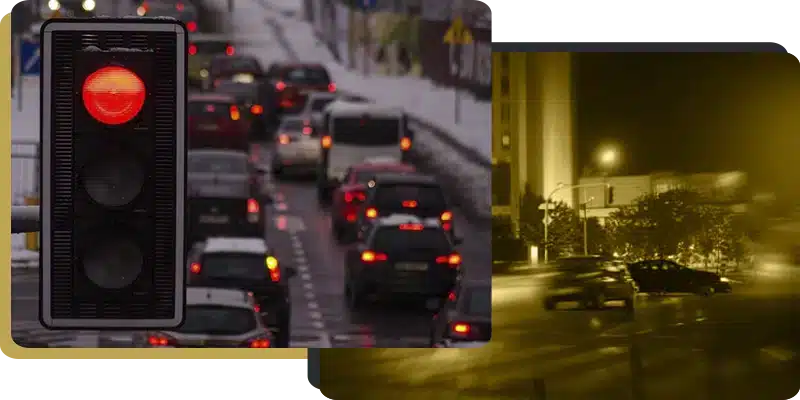
Speed measuring evasion articles
Daryl Kerrignan (of The Castle fame) once said, “it just paid for itself” when referring to a speed detection device his son bought from The Trading Post as they passed a highway patrol car. While it may have saved Daryl and his son from a speeding fine, it could have resulted in much harsher penalties for having possession of the device.
Sale, purchase or use of prohibited speed measuring evasion articles
You must not sell or offer for sale, or purchase, a prohibited speed measuring evasion article.
The maximum penalty for this offence is a fine of $2,200.
You must not drive a motor vehicle, or cause a motor vehicle or trailer to stand, on a road if a prohibited speed measuring evasion article is fitted or applied to, or carried in the vehicle or trailer.
The maximum penalty for this offence is a fine of $2,200.
The person responsible for the vehicle or trailer is also guilty of an offence.
The maximum penalty for this offence is a fine of $2,200.
It is a defence if you can prove to the court that the device was not designed as a prohibited speed measuring evasion article, but was designed for another purpose. Further defences also include:
![]() The vehicle was in the course of a journey to a place appointed by a police officer, an officer of the Authority or a court, in order to surrender the article, or
The vehicle was in the course of a journey to a place appointed by a police officer, an officer of the Authority or a court, in order to surrender the article, or
![]() The vehicle was the subject of a notice, issued in accordance with the statutory rules, requiring the responsible person for the vehicle to remove the article from the vehicle within a specified time and that time has not expired, or
The vehicle was the subject of a notice, issued in accordance with the statutory rules, requiring the responsible person for the vehicle to remove the article from the vehicle within a specified time and that time has not expired, or
![]() You did not know, and in the circumstances could not reasonably be expected to have known, that the article concerned was fitted or applied to, or was being carried in the vehicle at the time.
You did not know, and in the circumstances could not reasonably be expected to have known, that the article concerned was fitted or applied to, or was being carried in the vehicle at the time.
Surrender and forfeiture of prohibited speed measuring evasion devices
If a police officer reasonably believes that:
![]() A prohibited speed measuring evasion article is being sold or offered for sale in contravention of the legislation, or
A prohibited speed measuring evasion article is being sold or offered for sale in contravention of the legislation, or
![]() A motor vehicle or trailer is standing or being driven in contravention of the legislation because of an article fitted or applied to, or carried in, the motor vehicle or trailer,
A motor vehicle or trailer is standing or being driven in contravention of the legislation because of an article fitted or applied to, or carried in, the motor vehicle or trailer,
The officer may require a person in possession of the article to surrender it immediately to the officer, or in the case of an article fitted or applied to a motor vehicle or trailer and not immediately removable, may by notice in writing served on the responsible person for the vehicle or trailer require the responsible person to surrender the article within a specified time and in a specified manner to the Commissioner of Police.
An officer of the Authority who is authorised in writing by the Authority for the purposes of the legislation and who finds a prohibited speed measuring evasion article fitted or applied to, or carried in, a motor vehicle or trailer may, by notice in writing served on the responsible person for the motor vehicle or tailer, require the person to do either of the following:
![]() Remove the article (if it is fitted to the vehicle or trailer)
Remove the article (if it is fitted to the vehicle or trailer)
![]() Surrender the article within a specified time and in a specified manner to the Commissioner of Police
Surrender the article within a specified time and in a specified manner to the Commissioner of Police
Failure to comply is an offence. The maximum penalty for this offence is a fine of $2,200.
In a nutshell...
It is an offence to sell, purchase or drive a vehicle with a speed measuring evasion device. Heavy fines apply and you can be ordered to remove the item from your vehicle and surrender or forfeit the item to the Commissioner of Police. For further information, contact our expert traffic lawyers for a free initial consultation.
Case Study
Sam bought a second-hand car from a private seller. On her way home from retrieving the car she is stopped by Police for a random breath test. While conducting the test, the officer notices a speed measuring evasion device fitted to the vehicle. He asks Sam about it and she informs the officer she purchased the car second hand from a private seller and is on her way home. She doesn’t know what the device is or why it has been fitted to the car. Technically, Sam has committed an offence by driving a vehicle with a speed measuring evasion device fitted to it. Sam and the person who sold her the car could be fined $2,200. If she is fined, she is able to appeal the matter to the Local Court as she has evidence of lack of knowledge about the device (e.g. receipt, completed notice of disposal from seller, etc). However, she can still be ordered to have the device removed and forfeited to the Police Commissioner.
Police roadside powers
A police officer has the power to suspend or confiscate a driver’s licence for the following speeding offences:
![]() Serious offences causing death or grievous bodily harm
Serious offences causing death or grievous bodily harm
![]() Speeding in excess of 45km/h above the speed limit (automatic 6 months suspension)
Speeding in excess of 45km/h above the speed limit (automatic 6 months suspension)
![]() Street racing
Street racing
![]() Aggravated burnout offences
Aggravated burnout offences
![]() Novice driver speeding in excess of 30km/h above the speed limit (automatic 3 months suspension)
Novice driver speeding in excess of 30km/h above the speed limit (automatic 3 months suspension)
On the spot suspensions mean you MUST NOT drive the vehicle.
Police suspensions can be appealed
![]() You MUST lodge your appeal within 28 days of the infringement notice.
You MUST lodge your appeal within 28 days of the infringement notice.
![]() You MUST NOT drive while a licence suspension is in place. If you do, it can lead to further penalties. For further information about driving while suspended or disqualified, click on the Traffic Law link above.
You MUST NOT drive while a licence suspension is in place. If you do, it can lead to further penalties. For further information about driving while suspended or disqualified, click on the Traffic Law link above.
![]() A police officer also has the power to confiscate your number plate or impound your vehicle for a fixed period of 3 months for a first offence. If it is a second or subsequent offence within 5 years, the court can order the vehicle be forfeited to the Crown and it can be sold to the RMS for crash testing.
A police officer also has the power to confiscate your number plate or impound your vehicle for a fixed period of 3 months for a first offence. If it is a second or subsequent offence within 5 years, the court can order the vehicle be forfeited to the Crown and it can be sold to the RMS for crash testing.
You can appeal the confiscation of your number plate or the impoundment of your vehicle to the Local Court. You will need to lodge an application with the court and have evidence to support your requirement of the vehicle. For example, you are a carer and require the vehicle to transport your relative or you live in a regional area with limited access to public transport.
Summary Court Process (Local Court)
Speak with Traffic Lawyer
Contact Jameson Law for a free initial consultation
Mention Hearing
This is the first court date for your matter. It essentially brings it to the attention of the court. You can plead guilty at this stage after receiving legal advice and the matter will be finalised. If you plead not guilty, the court will adjourn your matter and set another court date. The court will set a date for each party to produce their evidence (brief mention)
Case Preparation
You should use this time to gather any supporting evidence such as character references.
Brief Mention
Each party must produce their evidence to the court and each other. Another court date will be set for hearing
Hearing
Both parties will present their argument to the court. The court will make their decision and issue a sentence where appropriate.
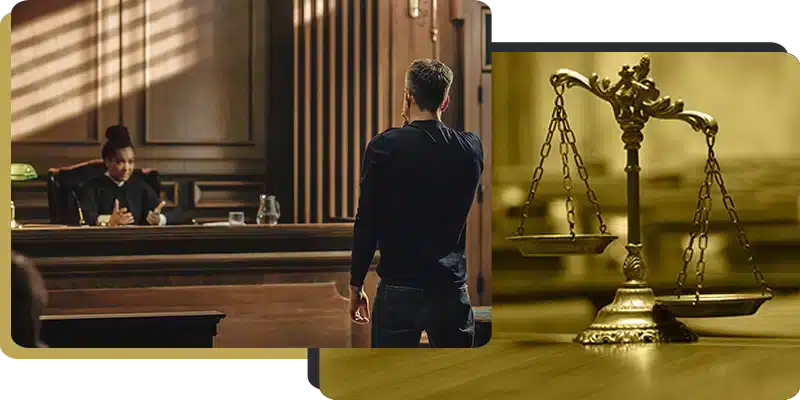
Local Court sentencing options
There are many sentencing options available to the Local Court. These options are available where no serious injury or death has resulted from the speed related offence. Pleading guilty at the earliest opportunity may entitle you to a 25% reduction in your sentence. However, you should not plead guilty until you have received legal advice, to ensure the best possible outcome for your matter.
Section 10
A section 10 is the best possible outcome in the event the court finds you guilty of a speed related offence. There are three orders available to the court under section 10 of the Crimes (Sentencing and Procedure) Act where the court believes it is inappropriate to further punish an offender.
![]() Section 10 (1) (a)- dismissal with no conviction recorded
Section 10 (1) (a)- dismissal with no conviction recorded
![]() Section 10 (1) (b)- dismissal with no conviction on conditions set by the court. For example, not to commit an offence for a period of two years
Section 10 (1) (b)- dismissal with no conviction on conditions set by the court. For example, not to commit an offence for a period of two years
![]() Section 10 (1) (c)- dismissal with no conviction on the condition that the offender enters into an intervention program. For example drug and alcohol counselling.
Section 10 (1) (c)- dismissal with no conviction on the condition that the offender enters into an intervention program. For example drug and alcohol counselling.
A section 10 is an acknowledgement of the court that you have committed an offence, however, the court is satisfied that it is out of character and you are unlikely to continue offending. It’s the court’s way of giving you a second chance.
Before granting a section 10, the court will consider:
![]() Your traffic history.
Your traffic history.
![]() Your character, antecedents, age, health and mental condition, etc
Your character, antecedents, age, health and mental condition, etc
![]() The trivial nature of the offence
The trivial nature of the offence
![]() Extenuating circumstances that lead to the offence being committed
Extenuating circumstances that lead to the offence being committed
![]() Any other matter the court considers relevant
Any other matter the court considers relevant
Intensive Correction Order
Intensive Corrections Orders are an option available to the court where a sentence of imprisonment is imposed on the condition that a defendant is of good behaviour and agrees to supervision by a community corrections officer rather than go to prison.
Additional conditions that may be imposed by the court include:
![]() home detention
home detention
![]() electronic monitoring
electronic monitoring
![]() curfew
curfew
![]() community service (up to 750 hours)
community service (up to 750 hours)
![]() participation in rehabilitation or treatment programs, for example, drug treatment/counselling
participation in rehabilitation or treatment programs, for example, drug treatment/counselling
![]() no drugs or alcohol
no drugs or alcohol
![]() refrain from certain relationships/associations, for example, drug dealer, etc.
refrain from certain relationships/associations, for example, drug dealer, etc.
![]() ban from certain locations
ban from certain locations
Community Correction Order
Community Corrections Orders are similar to Intensive Corrections Orders. The main exception being that a defendant needs to make themselves available to attend court at any time the court requires.
Conditional Release Order
A Conditional Release Order is similar to an Intensive Corrections Order or Community Corrections Order. A Conditional Release Order can be issued with or without a conviction recorded.
Section 32
A section 32 is a diversionary option available under the Mental Health (Forensic Provisions) Act 1990 (NSW). If a defendant is, or at the time of the speed related offence occurred:
![]() cognitively impaired
cognitively impaired
![]() suffering from mental illness
suffering from mental illness
![]() suffering from a mental condition for which treatment is available in a mental health facility
suffering from a mental condition for which treatment is available in a mental health facility
The options available to a magistrate under a section 32 include:
![]() adjourning the matter
adjourning the matter
![]() granting the defendant bail
granting the defendant bail
![]() any other order the magistrate deems appropriate
any other order the magistrate deems appropriate
![]() dismissing the charges and discharging the defendant into the care of a responsible person (e.g. a parent) on the condition they attend a specified place for assessment or treatment.
dismissing the charges and discharging the defendant into the care of a responsible person (e.g. a parent) on the condition they attend a specified place for assessment or treatment.
Disclaimer
The above is general legal information and should not be considered legal advice. You should speak with one of our criminal lawyers for legal advice tailored to your specific legal matter. The penalties listed are maximum penalties. The courts deal with matters on a case by case basis. It should also be noted that there may be court delays due to COVID-19.
Speak to an Expert Lawyer today

WE'RE IN IT TO WIN IT
Book your consultation
- This form submission is encrypted and secured to ensure your information remains confidential.
This form submission is encrypted and secured to ensure your information remains confidential.
What our Clients Say
Trustindex verifies that the original source of the review is Google. Worked with Nora and Cooper both really supportive and great help with my traffic matter highly recommendTrustindex verifies that the original source of the review is Google. I had the pleasure of being represented by Nora Sayeed from Jameson Law, and I couldn’t be more grateful for her support and professionalism throughout my legal matter. From our very first interaction, Nora was attentive, understanding, and thorough in her approach. She took the time to carefully listen to my situation, explained every step clearly, and made sure I felt supported at every stage. What stood out the most was her dedication and prompt action. Thanks to her efforts, we were able to successfully withdraw the charge before it even reached the hearing stage. Nora’s expertise, compassion, and calm demeanor made a stressful situation far more manageable. I truly appreciated how she went above and beyond to ensure a positive outcome. I highly recommend Nora to anyone in need of reliable and empathetic legal representation.Trustindex verifies that the original source of the review is Google. Reduced my suspension to 3wks from 3months.. for serious speeding charge. Amazing lawyers nora and cooperTrustindex verifies that the original source of the review is Google. I highly recommend Nora and the team at Jameson Law. Nora is professional, courteous, hard working and diligent. I cannot Thank you enough for our positive outcome. I recommend this firm 100%. A big shout out to Nora and Cooper. Keep up your professionalism. Would not go to anyone else for my legal matters. From the bottom of my heart THANKYOU.Trustindex verifies that the original source of the review is Google. Excellent service would recommend to othersTrustindex verifies that the original source of the review is Google. Nora and Cooper, what a team. Nora , you are absolutely beautiful and super intelligent.If you get in trouble Nora and Cooper are the team to help you.Such professionalism and style. Thank you both so very much.God bless you both.Trustindex verifies that the original source of the review is Google. Nora Sayed’s representation in April 2025 was outstanding. Jameson Law has a brilliant, knowledgeable Lady in their employment. The outcome was nothing short of a miracle. Nora achieved this! I thank her & wish her all the success in her Career. I would recommend Nora & Jameson Law without hesitation. Well done Thanks again. 👏🏼👏🏼😊Trustindex verifies that the original source of the review is Google. I had the pleasure of working with Nora Sayed for a legal matter, and I cannot recommend her highly enough. From the very beginning, Nora proved to be not just a knowledgeable and skilled attorney, but also someone who genuinely cares about her clients. What truly sets Nora apart was her dedication and commitment to ensuring the best possible outcome. She was always available to answer my questions, even after hours, and she was consistently responsive and approachable. Nora took the time to speak with my family, addressing their concerns and providing reassurance every step of the way, especially after hours. This level of personalized attention and care is rare to find in the legal field. Throughout the process, Nora's expertise and strategic thinking were invaluable. She made sure I understood my options, walked me through every detail, and provided guidance that gave me confidence in the decisions I was making. It was clear to me that Nora was invested in not just achieving a good result, but in helping me navigate a difficult situation with as much peace of mind as possible. I found her also very kind and compassionate. She truly goes above and beyond for her clients, and I am incredibly grateful for all the hard work she put into my case. Thanks to Nora, I had the best possible outcome, and I will forever be thankful for her support. Thank you, Nora, for everything you did!
Traffic Offences: Latest News and Resources
Licence Suspension Appeal – Parramatta Local Court Jameson Law Solicitor Wissam Philopos represented a 40-year-old male at Parramatta Local Court
Speeding Charge Dismissed We recently appeared in Burwood Local Court on behalf of a 43-year-old man charged with exceeding the
Speeding Charge Dismissed We recently appeared in Burwood Local Court on behalf of a 43-year-old man charged with exceeding the
Our Solicitor Wissam Philopos represented our client at Parramatta Local Court on 9 March 2023 in relation to the clients
Our Solicitor Wissam Philopos represented our client at Parramatta Local Court on 9 March 2023 in relation to the clients
Our Solicitor Danielle Epifania represented a 20-year-old female at Parramatta Local Court in relation to the clients License Suspension Appeal.
Motor Vehicle exceed limit caught on Camera Our client was charged with ‘Motor vehicle exceed speed limit – not more
Successful Case Dismissal for Speeding Offence Our solicitor Nicholas Hardy-Clements represented a 27-year-old woman at Burwood Local Court on 22
FAQs
Frequently Asked Questions.
You should check the date the offence is alleged to have occurred and then confirm who was driving your vehicle at the time. If you know who was driving the vehicle, you can nominate the driver on the Revenue NSW website or via stat dec. You will need to know the driver’s name, address, date of birth and the penalty number which is located on the fine. If you cannot remember the driver, you can request a copy of the photo taken, however, you may be required to pay a fee and there is no guarantee the face of the driver was caught on the camera. If you are unable to determine who was driving the vehicle, it is recommended that you seek legal advice.
There are a number of ways you can appeal a speeding fine.
- Request a review of your fine by Revenue NSW. You can request a review if you believe the fine was issued in error (e.g. your car was parked in your driveway at the time of the offence), you have extenuating circumstances (e.g. you were experiencing a medical episode) or you are requesting leniency because of your good driving history (for offences under 20km/h and a driving record that has been clear for the past 10 years). You may be required to submit evidence to support your review.
- Appeal your matter in the Local Court if you are unhappy with the outcome of the review. You can appeal your matter to the court instead of requesting a review, however, it is recommended you seek a review first to save you time and money.
Time limits apply, so make sure you lodge your review or appeal as soon as possible.
Double demerit points are in place during peak holiday periods in NSW. They apply to general speeding offences set out above including school zone speeding offences and speeding offences committed by learner and provisional drivers. They start at midnight on the start date and finish at midnight on the end date. If you are caught speeding during double demerits, you will lose double the demerit points you would normally lose, however, the fine and suspension/disqualification periods remain the same.
WE'RE IN IT TO WIN IT
Book your consultation
- This form submission is encrypted and secured to ensure your information remains confidential.
This form submission is encrypted and secured to ensure your information remains confidential.
OUR SYDNEY OFFICES
Parramatta CBD - Head Office
- (02) 8806 0866
- 0488 817 882
- 02 9052 0840
- info@jamesonlaw.com.au
- Suite 301, 67-69 Philip St Parramatta NSW 2150
Sydney CBD - Practice Office
- 02-8806-0866
- 0488 817 882
- 02 9052 0840
- info@jamesonlaw.com.au
- Tower One Barangaroo International Towers Level 35, 100 Barangaroo Ave Sydney NSW 2000
Blacktown CBD - Practice Office
- (02) 8806 0866
- 0488 817 882
- 02 9052 0840
- info@jamesonlaw.com.au
-
Level 3 81 Flushcombe Road, Blacktown NSW 2148
(By Appointment Only)
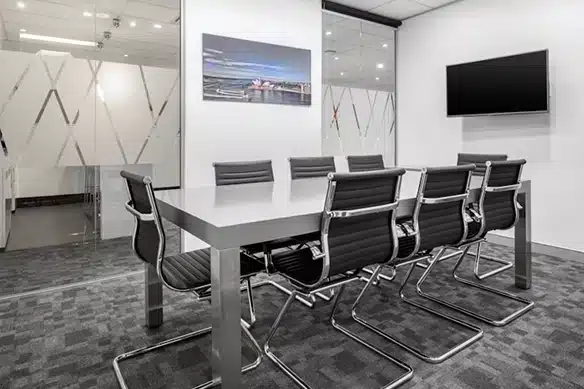
Liverpool CBD - Practice Office
- (02) 8806 0866
- 0488 817 882
- 02 9052 0840
- info@jamesonlaw.com.au
-
Level 2, 215-219 George Street, Liverpool NSW 2170
(By Appointment Only)

Bankstown CBD - Practice Office
- (02) 8806 0866
- 0488 817 882
- 02 9052 0840
- info@jamesonlaw.com.au
-
23 Restwell Street, Bankstown NSW 2200
(By Appointment Only)

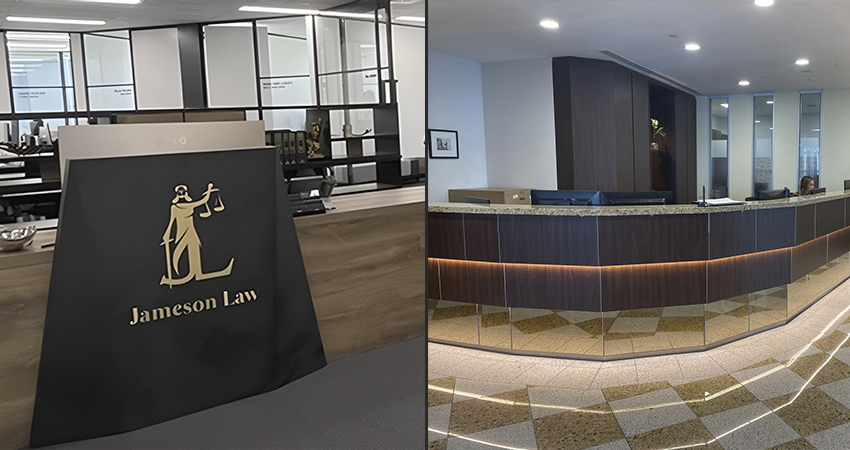
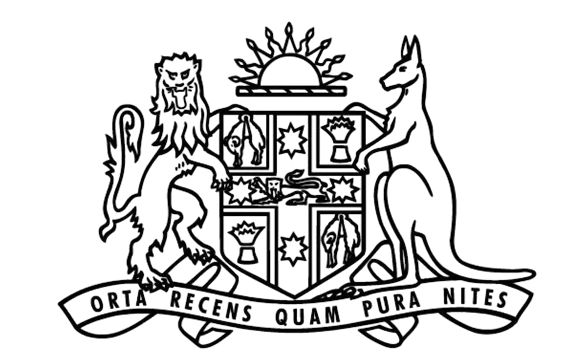
Court Houses We Frequent
Local Courts
Balmain Local Court
- 1300 679 272
- local-court-burwood@justice.nsw.gov.au
- 368 Darling Street, Balmain NSW 2041
Registry: Monday to Friday, 9:00am to 4:30pm
Bankstown Local Court
- 1300 679 272
- (02) 9722 6060
- PO Box 71 BANKSTOWN NSW 2200
- local-court-bankstown@justice.nsw.gov.au
- Cnr Chapel Road and The Mall BANKSTOWN NSW 2200
Court Operating Hours: 9:30am-4:30pm
Blacktown Local Court
- 1300 679 272
- (02) 9672 2666
- PO Box 217 BLACKTOWN NSW 2148
- local-court-blacktown@justice.nsw.gov.au
- 1 Kildare Road Blacktown NSW 2148
Registry Hours: 9:00 – 4:30
Telephone Hours: 8:30 -4:30
Days open: Mon-Fri
Burwood Local Court
- 1300 679 272
- (02) 9744 4144
- PO Box 235 BURWOOD NSW 1805
- local-court-burwood@justice.nsw.gov.au
- 7-9 Belmore Street BURWOOD NSW 2134
Registry Hours: 9:00 – 4:30
Telephone Hours: 8:30 – 4:30
Days open: Mon – Fri
Campbell Local Court
- 1300 679 272
- (02) 9821 7888
- PO Box 3435 LIVERPOOL WESTFIELDS NSW 2170
- local-court-campbelltown@justice.nsw.gov.au
- 150 George Street LIVERPOOL NSW 2170
Registry Hours: 9:00 – 4:30
Telephone Hours: 8:30 – 4:30
Days open: Mon – Fri
Central Local Court
- 1300 679 272
- (02) 4223 3633
- PO Box 5395 WOLLONGONG NSW 2500
- local-court-wollongong@justice.nsw.gov.au
- Cnr Market and Church Streets WOLLONGONG NSW 2500
Registry Hours: 9:00 – 1:00 and 2:00 – 4:30
Telephone Hours: 8:30 – 4:30
Downing Local Court
- 1300 679 272
- (02) 4223 3633
- PO Box 5395 WOLLONGONG NSW 2500
- dclc@justice.nsw.gov.au
- 143-147 Liverpool Street, Sydney NSW 2000
- Nearest Train Station: Museum Station (Liverpool Street entrance is directly opposite)
- Levels: Local Court matters are heard on levels 4 and 5.
- Public Transport: Well-served by buses and trains, with easy access to nearby bus stops and Museum Station.
- Parking: Limited street parking is available, and there are several public parking garages nearby.
Registry Hours: 9:00 – 1:00 and 2:00 – 4:30
Telephone Hours: 8:30 – 4:30
Wollongong Local Court
- 1300 679 272
- (02) 4223 3633
- PO Box 5395 WOLLONGONG NSW 2500
- local-court-wollongong@justice.nsw.gov.au
- Cnr Market and Church Streets WOLLONGONG NSW 2500
Registry Hours: 9:00 – 1:00 and 2:00 – 4:30
Telephone Hours: 8:30 – 4:30
Fairfield Local Court
- 1300 679 272
- (02) 4223 3633
- PO Box 5395 WOLLONGONG NSW 2500
- local-court-wollongong@justice.nsw.gov.au
- Cnr Spencer St & Court Rd, Fairfield NSW 2165
Registry Hours: 9:00 – 1:00 and 2:00 – 4:30
Telephone Hours: 8:30 – 4:30
Hornsby Local Court
- 1300 679 272
- (02) 9847 9955
- PO Box 96 HORNSBY NSW 1630
- local-court-hornsby@justice.nsw.gov.au
- 294 Peats Ferry Rd HORNSBY NSW 2077
Registry Hours: 9:00 – 1:00 and 2:00 – 4:30
Telephone Hours: 8:30 – 4:30
Liverpool Local Court
- 1300 679 272
- (02) 9722 6060
- PO Box 71 BANKSTOWN NSW 2200
- local-court-bankstown@justice.nsw.gov.au
- Cnr Chapel Road and The Mall BANKSTOWN NSW 2200
Registry Hours: 9:00 – 1:00 and 2:00 – 4:30
Telephone Hours: 8:30 – 4:30
Manly Local Court
- 1300 679 272
- (02) 9722 6060
- PO Box 71 BANKSTOWN NSW 2200
- local-court-bankstown@justice.nsw.gov.au
- Cnr Chapel Road and The Mall BANKSTOWN NSW 2200
Registry Hours: 9:00 – 1:00 and 2:00 – 4:30
Telephone Hours: 8:30 – 4:30
Newtown Local Court
- 1300 679 272
- (02) 9722 6060
- PO Box 71 BANKSTOWN NSW 2200
- local-court-bankstown@justice.nsw.gov.au
- Cnr Chapel Road and The Mall BANKSTOWN NSW 2200
Registry Hours: 9:00 – 1:00 and 2:00 – 4:30
Telephone Hours: 8:30 – 4:30
Parramatta Local Court
- 1300 679 272
- (02) 4223 3633
- PO Box 92 Parramatta NSW 2150, Australia
- local-court-parramatta@justice.nsw.gov.au
- 12 George Street Parramatta NSW 2150, Australia
Registry Hours: 9:00 – 1:00 and 2:00 – 4:30
Telephone Hours: 8:30 – 4:30
Penrith Local Court
- 1300 679 272
- (02) 9722 6060
- PO Box 71 BANKSTOWN NSW 2200
- local-court-bankstown@justice.nsw.gov.au
- Cnr Chapel Road and The Mall BANKSTOWN NSW 2200
Registry Hours: 9:00 – 1:00 and 2:00 – 4:30
Telephone Hours: 8:30 – 4:30
Sutherland Local Court
- 1300 679 272
- PO Box 37, Sutherland 2232
- local-court-sutherland@justice.nsw.gov.au
- Cnr Flora and Belmont Street, Sutherland NSW 2232
Registry Hours: 9:00 – 1:00 and 2:00 – 4:30
Telephone Hours: 8:30 – 4:30
Waverley Local Court
- 1300 679 272
- (02) 9722 6060
- PO Box 71 BANKSTOWN NSW 2200
- local-court-bankstown@justice.nsw.gov.au
- Cnr Chapel Road and The Mall BANKSTOWN NSW 2200
Registry Hours: 9:00 – 1:00 and 2:00 – 4:30
Telephone Hours: 8:30 – 4:30
Windsor Local Court
- 1300 679 272
- (02) 9722 6060
- PO Box 71 BANKSTOWN NSW 2200
- local-court-bankstown@justice.nsw.gov.au
- Cnr Chapel Road and The Mall BANKSTOWN NSW 2200
Registry Hours: 9:00 – 1:00 and 2:00 – 4:30
Telephone Hours: 8:30 – 4:30
Wollongong Local Court
- 1300 679 272
- (02) 9722 6060
- PO Box 71 BANKSTOWN NSW 2200
- local-court-bankstown@justice.nsw.gov.au
- Cnr Chapel Road and The Mall BANKSTOWN NSW 2200
Registry Hours: 9:00 – 1:00 and 2:00 – 4:30
Telephone Hours: 8:30 – 4:30
District Courts
Downing Centre District Court
- 1300 679 272
- PO Box 71 BANKSTOWN NSW 2200
- downingcentredc@justice.nsw.gov.au
- 143-147 Liverpool Street, Sydney NSW 2000
Registry Hours: 9:00 – 4:30
Telephone Hours: 8:30 – 4:30
Days open: Mon – Fri
Parramatta District Court
- (02) 8688 7777
- local-court-bankstown@justice.nsw.gov.au
- 12 George Street, Parramatta NSW 2150
Registry Hours: 9:00 – 4:30
Days open: Mon-Fri
Penrith District Court
- 1300 679 272
- local-court-penrith@justice.nsw.gov.au
- 64-72 Henry Street, Penrith NSW 2750
Registry Hours: 9:00 – 4:30
Days open: Mon-Fri
Campbelltown District Court
- 1300 679 272
- local-court-campbelltown@justice.nsw.gov.au
- Railway Street, Campbelltown NSW 2560
Registry Hours: 9:00 – 4:30
Days open: Mon – Fri
Liverpool District Court
- 1300 679 272
- local-court-liverpool@justice.nsw.gov.au
- 150 George Street, Liverpool NSW 2170
Registry Hours: 9:00 – 4:30
Days open: Mon – Fri
Wollongong District Court
- 1300 679 272
- local-court-wollongong@justice.nsw.gov.au
- 97-99 Market Street, Wollongong NSW 2500
Registry Hours: 9:00 – 1:00 and 2:00 – 4:30
Telephone Hours: 8:30 – 4:30
Supreme Courts
Supreme Court New South Wales
- 1300 679 272
- (02) 9230 8025
- (02) 9230 8233
- GPO Box 3 Sydney NSW 2001 Australia
- sc.enquiries@justice.nsw.gov.au
- Law Courts Building 184 Phillip Street Sydney NSW 2000
Registry Hours: 9:00 AM – 4:30 PM
Telephone Hours: 8:30 AM – 4:30 PM
Days Open: Monday to Friday
Federal Court
Federal Circuit and Family Court of Australia
- 1300 352 000
- (02) 9230 8000
- GPO Box 9991, Sydney NSW
- enquiries@fcfcoa.gov.au
- Lionel Bowen, Building, 97/99 Goulburn St, Sydney NSW 2001
Registry Hours: 9:00 AM – 4:30 PM
Telephone Hours: 8:30 AM – 5:00 PM
Days Open: Monday to Friday
Federal Court
- 1300 720 980
- (02) 9230 8020
- GPO Box 9991, Sydney NSW
- enquiries@fedcourt.gov.au
- 97-99 Goulburn St in the heart of the Sydney CBD
Monday to Friday, 8:30 AM – 4:30 PM
High Court
- (02) 6270 6811
- (02) 6270 6868
- Parkes Place, Canberra ACT 2600
- enquiries@hcourt.gov.au
- Parkes Place, Canberra ACT 2600
Monday to Friday, 8:30 AM – 5:00 PM
Specialised Courts
Children’s Court of New South Wales
- 1300 679 272
- (02) 9722 6060
- Cnr Chapel Road and The Mall BANKSTOWN NSW 2200
- PO Box 71 BANKSTOWN NSW 2200
- sc.enquiries@justice.nsw.gov.au
Registry Hours: 9:00 AM – 4:30 PM
Telephone Hours: 8:30 AM – 4:30 PM
Days Open: Monday to Friday
Coroner’s Court New South Wales
- 1300 679 272
- (02) 9230 8025
- (02) 9230 8233
- GPO Box 3 Sydney NSW 2001 Australia
- sc.enquiries@justice.nsw.gov.au
- Law Courts Building 184 Phillip Street Sydney NSW 2000
Registry Hours: 9:00 AM – 4:30 PM
Telephone Hours: 8:30 AM – 4:30 PM
Days Open: Monday to Friday
Industrial Relations Commission of New South Wales
- 1300 679 272
- (02) 9230 8025
- (02) 9230 8233
- GPO Box 3 Sydney NSW 2001 Australia
- sc.enquiries@justice.nsw.gov.au
- Law Courts Building 184 Phillip Street Sydney NSW 2000
Registry Hours: 9:00 AM – 4:30 PM
Telephone Hours: 8:30 AM – 4:30 PM
Days Open: Monday to Friday
Land and Environment Court of New South Wales
- 1300 679 272
- (02) 9230 8025
- (02) 9230 8233
- GPO Box 3 Sydney NSW 2001 Australia
- sc.enquiries@justice.nsw.gov.au
- Law Courts Building 184 Phillip Street Sydney NSW 2000
Registry Hours: 9:00 AM – 4:30 PM
Telephone Hours: 8:30 AM – 4:30 PM
Days Open: Monday to Friday


